Slug Flow, Ansys Fluent CFD Simulation Training
$80.00 Student Discount
- The problem numerically simulates the Slug Flow in a pipe using ANSYS Fluent software.
- We design the 3-D model by the Design Modeler software.
- We Mesh the model by ANSYS Meshing software, and the element number equals 1148302.
- We perform this simulation as unsteady (Transient).
- We use the Eulerian Multi-Phase model to define Slug flow, including gas-liquid phases.
To Order Your Project or benefit from a CFD consultation, contact our experts via email ([email protected]), online support tab, or WhatsApp at +44 7443 197273.
There are some Free Products to check our service quality.
If you want the training video in another language instead of English, ask it via [email protected] after you buy the product.
Description
Description
The present problem simulates the Slug Flow in a pipe using ANSYS Fluent software. We perform this CFD project and investigate it by CFD analysis.
In fluid mechanics, slug flow in liquid-gas two-phase flow is a type of flow pattern.
The present model is designed in three dimensions using the Design Modeler software. The model consists of a bent pipe in which air and water flow.
The meshing of the model was done using ANSYS Meshing software. The element number is equal to 1148302.
Also, due to the nature of the present problem, the transient solver has been enabled.
Slug Flow Methodology
Slug flow is a multiphase-flow regime in tubes in which most of the lighter fluid is contained in large bubbles dispersed within and pushing along the heavier fluid. The word slug refers typically to the more severe and slower-moving fluid but sometimes to the bubbles of lighter fluid.
There are also tiny bubbles within the liquid, but many coalesced to form large bubbles until they span much of the pipe. In gas-liquid mixtures, slug flow is similar to plug flow, but the bubbles are generally more giant and faster.
The Eulerian multiphase model has been used. The mixture enters the domain with a velocity of 0.6 m/s with gravity considered -9.81 m/s2 on the y-axis.
Slug Flow Conclusion
At the end of the solution process, three-dimensional velocity, air and water volume fraction, and animation are obtained. This 3-D simulation starts with a pipe filled with air and water as a mixture.
As time passes, air bubbles join together and make slugs because of the lower air density than water. The air slug moves up the surface of the pipe and continues to move forward the outlet.
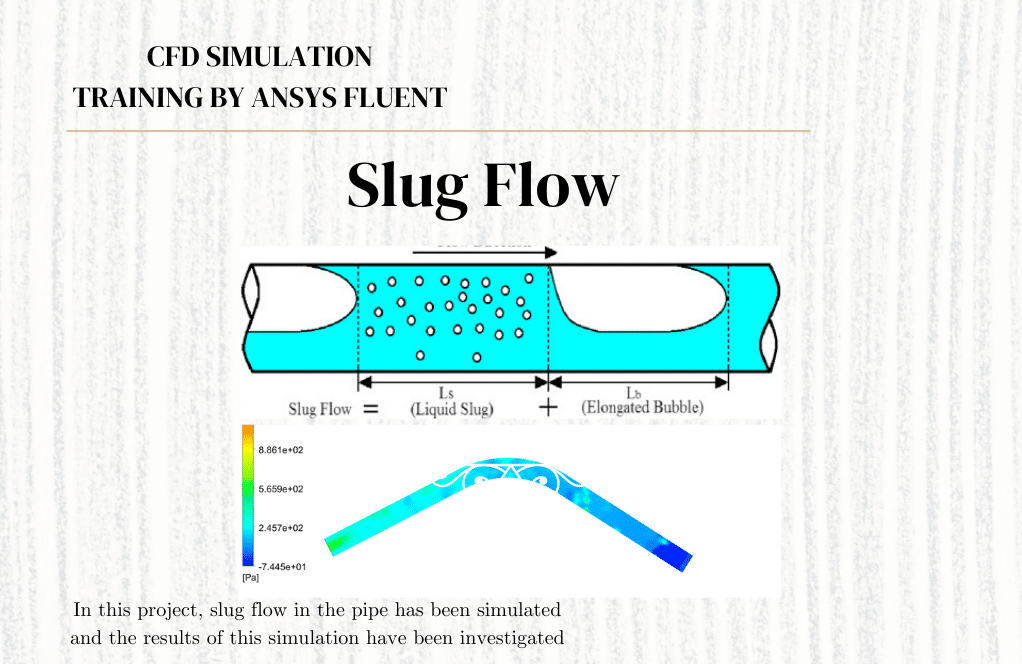
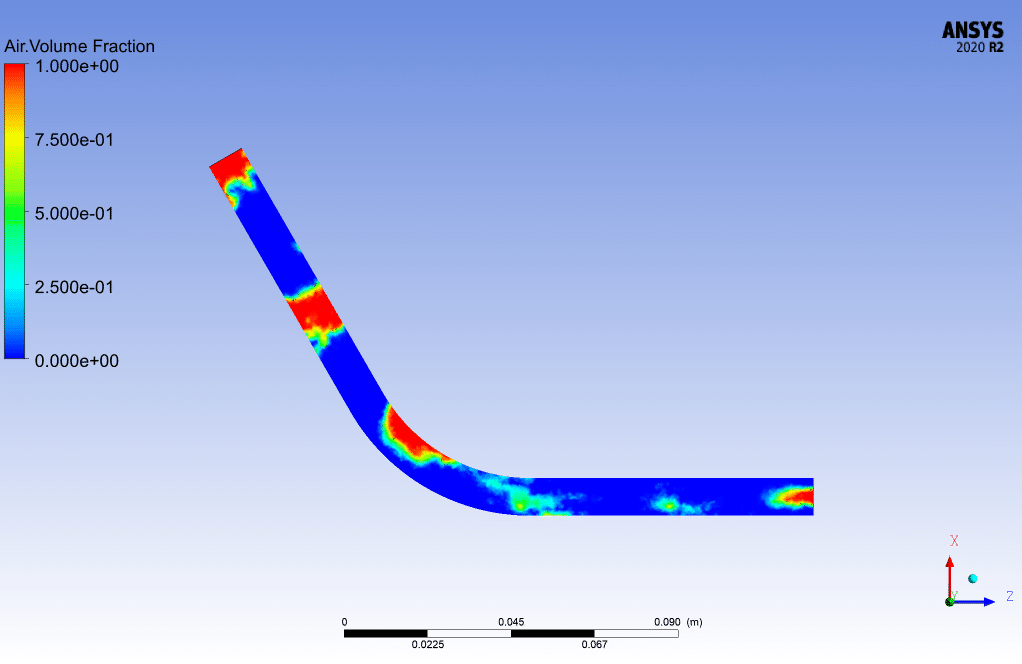
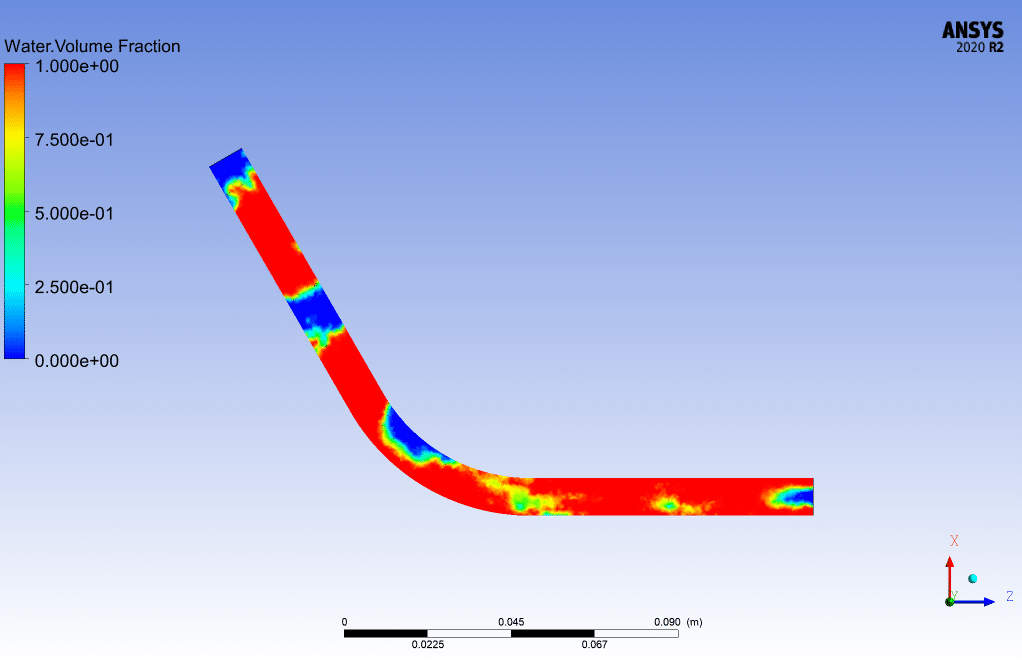
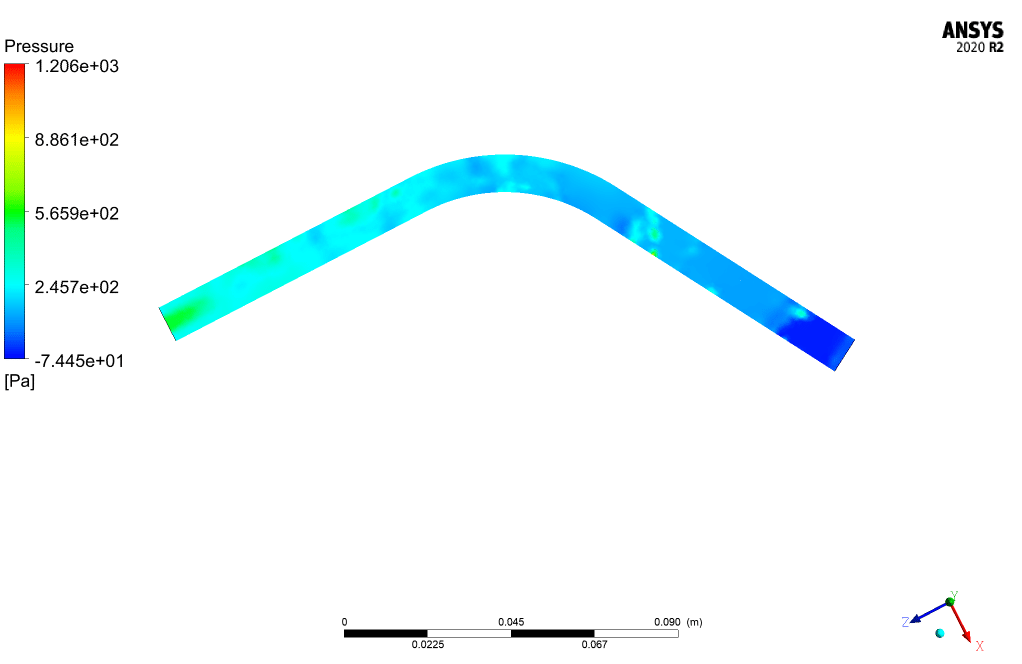
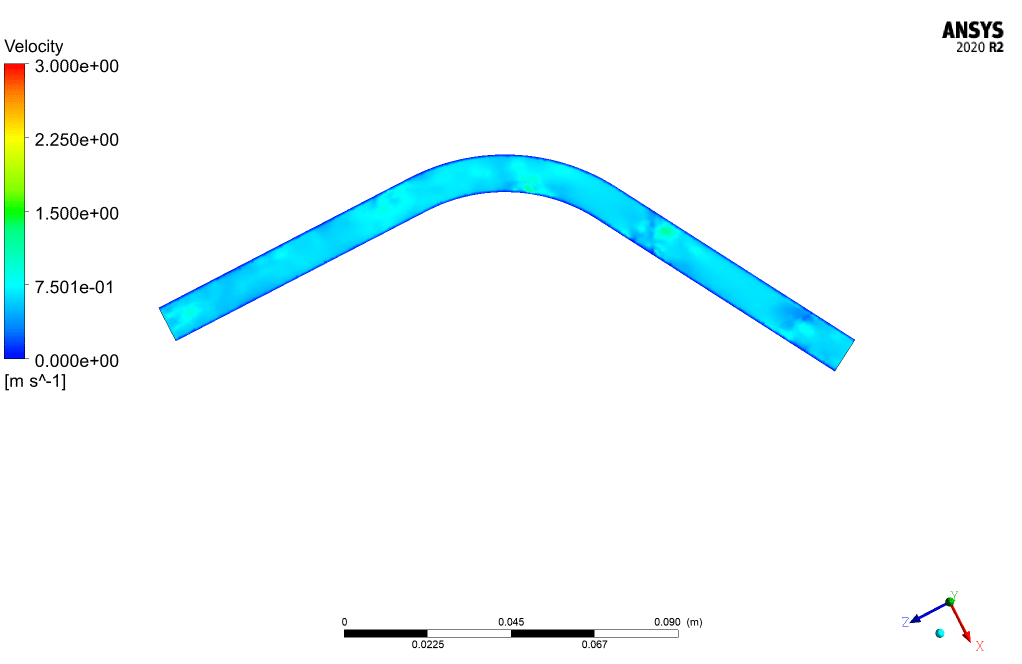
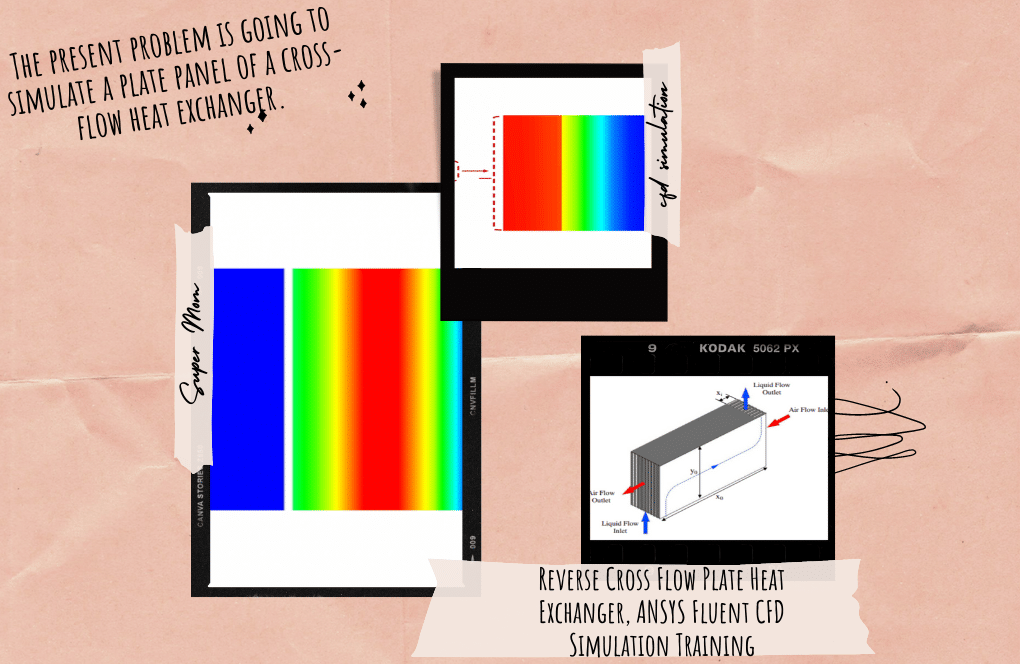

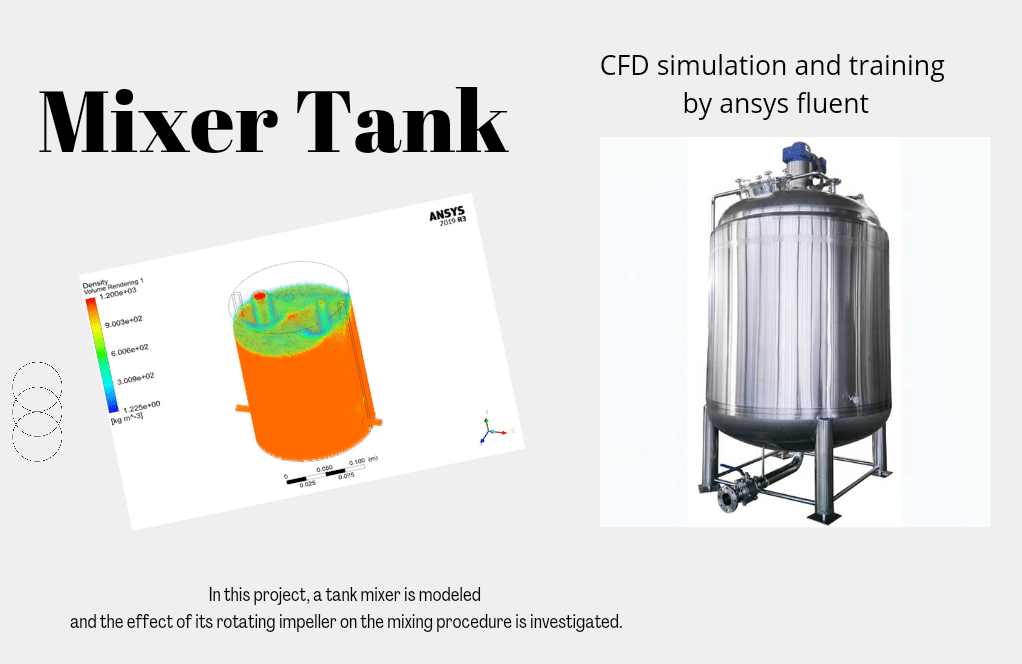
Ford Pouros –
The visual representations of the slug flow in the training material were quite clear. It was fascinating to watch the dynamic interactions between the air and water leading to the formation of slugs. The detailed instructions allowed me to understand exactly how the bubbles coalesce and the factors that affect their movement. Great work on providing such an intuitive simulation of a complex fluid dynamic topic!
MR CFD Support –
Thank you for your kind words! We are delighted to hear that our simulation of the slug flow was clear and educational for you. We always strive to provide accurate and detailed visual representations to enhance understanding. Your feedback motivates us to continue developing high-quality CFD training materials.
Soledad Ondricka II –
The simulation of slug flow in a pipe is truly fascinating. The complexity involved in correctly modeling the interaction between air and water resulted in a realistic representation of slug flow dynamics. Seeing the animation of how the air bubbles coalesce into slugs, spanning across the pipe, was both instructive and visually impressive.
MR CFD Support –
Thank you for your positive feedback! We’re delighted to hear that you found the slug flow simulation to be realistic and visually impressive. We strive to provide high-quality simulations that are not only accurate but also aid in the understanding of complex flow phenomena. Your comment encourages us to continue delivering top-notch CFD learning experiences.
Prof. Eldridge Roberts IV –
The visuals in this slug flow simulation are quite intriguing! The way the air bubbles evolved over time into slugs and moved through the pipeline was very informative and effectively illustrated the concepts taught in the training.
MR CFD Support –
Thank you for your positive feedback! We’re glad to hear that the slug flow simulation visuals met your expectations and helped to solidify your understanding of the flow dynamics. If you need any further support or clarification, feel free to reach out to us.
Charlotte Watsica –
The detailed explanation of slug flow simulation is fantastic! The visualization of slug flow provided an excellent understanding of the phenomenon.
MR CFD Support –
Thank you for your kind words! We’re thrilled to hear that our product provided you with a clear understanding of slug flow phenomena and that the visualization aspects made it more engaging. We appreciate your feedback!
Hayden Miller –
I found the training on slug flow simulation amazing. Watching the large bubble formation and the dynamic interaction between air and water was captivating and provided a clear understanding of slug flow in pipelines.
MR CFD Support –
Thank you for your positive feedback! We’re delighted that our training on slug flow simulation has been helpful and engaging for you. Visualizing the interactions between phases in a multiphase flow is crucial for comprehension, and it’s great to hear that our CFD project has contributed to your understanding of such an important phenomenon. If you have any further topics you’d like to explore, please let us know!
Mr. Darien Sporer –
Could you provide more details on the difference between slug flow and plug flow as it pertains to the simulation?
MR CFD Support –
In the context of the simulation, slug flow can be distinguished from plug flow primarily by the larger size of the gas bubbles and the more severe nature of the flow pattern. In slug flow, gas slugs encapsulate a larger volume and can greatly affect the liquid flow dynamics, whereas in plug flow, the gas bubbles are typically smaller and more uniformly distributed, creating a more stable and less intermittent flow regime.
Dr. Nelda Volkman –
I’m thrilled with the detailed simulations of the slug flow; the multiphase interactions seem complex but have been made very clear. Fantastic learning material!
MR CFD Support –
Thank you very much for your positive feedback! We’re delighted to hear that the slug flow simulation material was informative and made the complexities of multiphase flow more comprehensible for you. If you need further information or assistance on this topic or any other, don’t hesitate to reach out!
Miss Mertie Fritsch –
The training module on slug flow simulation was great! It helped me understand the different elements contributing to this complex phenomenon. The visuals and the explanations were very clear.
MR CFD Support –
Thank you so much for your positive feedback on our slug flow simulation training. We’re delighted to hear that the module was helpful and that the visuals aided your understanding. If you have any further questions or need more resources, please don’t hesitate to reach out.
Waldo Kuphal –
This training helped me understand slug flow behaviors much better. Thank you MR CFD for such a detailed simulation. It’s clear a lot of work went into making this resource.
MR CFD Support –
Thank you for your positive feedback! We’re thrilled to hear that our Slug Flow simulation training enhanced your understanding. Your appreciation means a lot and motivates us to keep delivering high-quality CFD resources.
Juwan Bogisich –
The simulation training for Slug Flow sounds fascinating. Does it include guidance on how to treat the interface between the air and water for such complex flow patterns?
MR CFD Support –
Yes, the Slug Flow CFD Simulation training includes detailed instructions on setting up the Eulerian multiphase model to capture the interaction between the air and water phases accurately. The training ensures that users understand how to set initial conditions and interpret the behavior of the fluid interface under slug flow conditions in ANSYS Fluent.
Mrs. Maiya McGlynn V –
I just finished examining the training for Slug Flow using Ansys Fluent and I’m impressed by how well the slugging behavior is captured using the Eulerian multiphase model. The phenomena of bubble coalescence were nicely observed.
MR CFD Support –
Thank you for your positive feedback! We’re thrilled to hear that our training met your expectations and that the complex behavior of slug flow was clearly demonstrated through the simulation. Your understanding of the phenomenon is a testimony to the quality of our training. If you need further assistance or more information on similar topics, feel free to reach out!
Dr. Jeromy King II –
The visualization you’ve shared from slug flow simulation is fascinating. Coupling complex physics in such a dynamic system is impressive, and the results appear to be very promising. Seeing the air and water volume fraction changes over time genuinely illustrates the phenomena of slug formation within the flow. Great work on this 3D simulation!
MR CFD Support –
Thank you for your kind words! We are delighted to hear that our simulation of slug flow was able to convincingly depict the complex interplay between air and water within a bent pipe. Our team strives to provide highly accurate and insightful analyses to help understand such fluid dynamics scenarios better. Your appreciation means a lot to us and motivates us to keep delivering top-notch simulations. If you have any further questions or need more information, please feel free to reach out.
Wilfred Wolf –
I am amazed at how well the Slug Flow simulation captures the actual fluid behavior inside the pipe. The coalescing of the air bubbles and the formation of slugs was incredibly realistic. Great work!
MR CFD Support –
Thank you for your positive feedback! We’re thrilled to hear that our Slug Flow simulation has met your expectations and provided a realistic portrayal of fluid behavior. Your satisfaction is our top priority, and we look forward to providing you with more high-quality simulations.
Christy Harvey –
Very pleased with the results of the Slug Flow simulation training. It provided a comprehensive understanding of multi-phase flow dynamics with detailed insights into slug formation. This information is invaluable for my ongoing research.
MR CFD Support –
Thank you for your glowing feedback! We’re thrilled to hear that the Slug Flow CFD Simulation Training contributed significantly to your research. Your understanding and insights are exactly what we aim for with our training products. If you require further assistance or additional resources, please don’t hesitate to get in touch. We’re here to support your continued success!
Kassandra Parker PhD –
I’m impressed with the accuracy of the slug flow simulation! How well does the simulation capture the transient behaviors characteristic of slug flow in comparison to experimental studies?
MR CFD Support –
Thank you for recognizing the detail and accuracy in our pursuit of simulating slug flow dynamics. Our simulation captures the transient behaviors characteristic of slug flow, such as the formation and evolution of large air slugs and their interaction with the surrounding liquid, in close accordance with empirical data and experimental studies. Advanced numerical models and properly defined boundary and initial conditions in ANSYS Fluent allow for these complex multiphase flow patterns to be recreated with a high degree of fidelity.
Ena Lakin I –
This SLug Flow simulation tutorial seems comprehensive. Are the animations of the slug flow detailed enough to visually explain the concept to someone new to fluid dynamics?
MR CFD Support –
Yes, the animations illustrate the flow dynamics vividly. They show how air bubbles coalesce within the fluid and how slugs are formed and move along the pipe, making the concept clear even for beginners.
Dr. Delta Trantow –
I truly enjoyed understanding the complex nature of slug flow dynamics through this CFD simulation training on ANSYS Fluent software. The representations and animations provided added a whole new level of clarity to my knowledge on this topic. Working on the actual simulation with such a detailed guides on methodology and concluded analysis was incredibly rewarding.
MR CFD Support –
Thank you for your positive feedback! We’re delighted to hear that our slug flow CFD simulation training has effectively enriched your understanding of fluid dynamics and multiphase flow regimes. Your satisfaction is our top priority, and we’re pleased that our detailed materials met your educational needs.
Dr. Mertie Hayes DVM –
The visuals for the slug flow pattern are stunning! It’s fascinating to see how the bubbles coalesce and form slugs within the pipes.
MR CFD Support –
Thank you for your positive feedback on the slug flow simulation visuals. We’re thrilled to know that you’ve found the representation of the bubble coalescence and slug formation fascinating and insightful. If you have any further questions or curiosities about our simulations or if you wish to learn more about any specific detail, feel free to reach out to us!
Benedict Hagenes –
Can you explain what makes slug flow important in industry applications, and what benefits does CFD simulation bring to studying it?
MR CFD Support –
Slug flow is important in industry applications because it can lead to operational issues like flow assurance and mechanical integrity in pipelines. CFD simulations allow for understanding and predicting slug flow behavior, enabling the design of more efficient and safer systems through virtual testing without expensive experimental setups.
Edwina Bartell –
The simulation training seems very detailed. Great work! It’s impressive to see comprehensive slug flow analysis with Ansys Fluent, and the use of transient analysis add realism to the behavior of the flow.
MR CFD Support –
Thank you for your positive feedback! We’re delighted to hear that you find the slug flow simulation detailed and realistic. Our goal is always to provide comprehensive and accurate CFD analysis in our training materials. If you have any further questions or need additional assistance, don’t hesitate to reach out.
Magnolia Runolfsson PhD –
The explanation of slug flow is comprehensive! It really helped me visualize the motion of bubbles and understand the flow dynamics. Great job on this simulation tutorial.
MR CFD Support –
Thank you for your positive feedback! We are thrilled to hear that the slug flow simulation tutorial was helpful and provided a clear understanding of the flow patterns and dynamics. Your appreciation motivates us to continue creating high-quality educational simulations. If you have any further questions or need assistance with other topics, feel free to reach out. Thank you for choosing our learning products!
Prof. Genesis Larson –
I was impressed with the simulation of slug flow. The visualization of air slugs forming was quite intuitive, and the animation made it easy to understand the behavior within the pipe. Great work on demonstrating this complex flow pattern!
MR CFD Support –
Thank you for your appreciation! We are thrilled to hear that the visualization and animation were helpful in understanding slug flow. It is our goal to make complex flow patterns comprehensible through our simulations. We value your feedback and look forward to providing you with more high-quality CFD training content in the future.